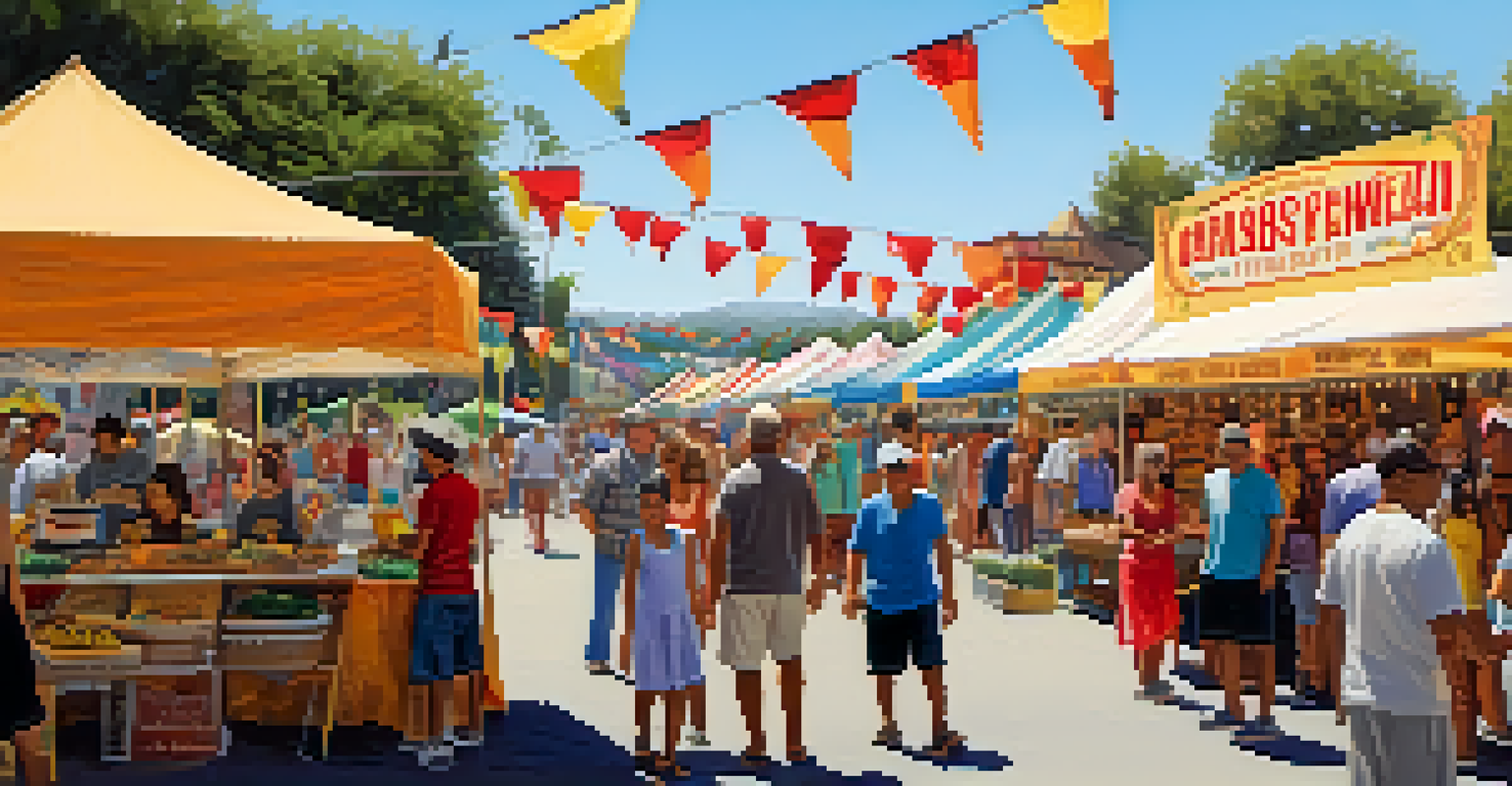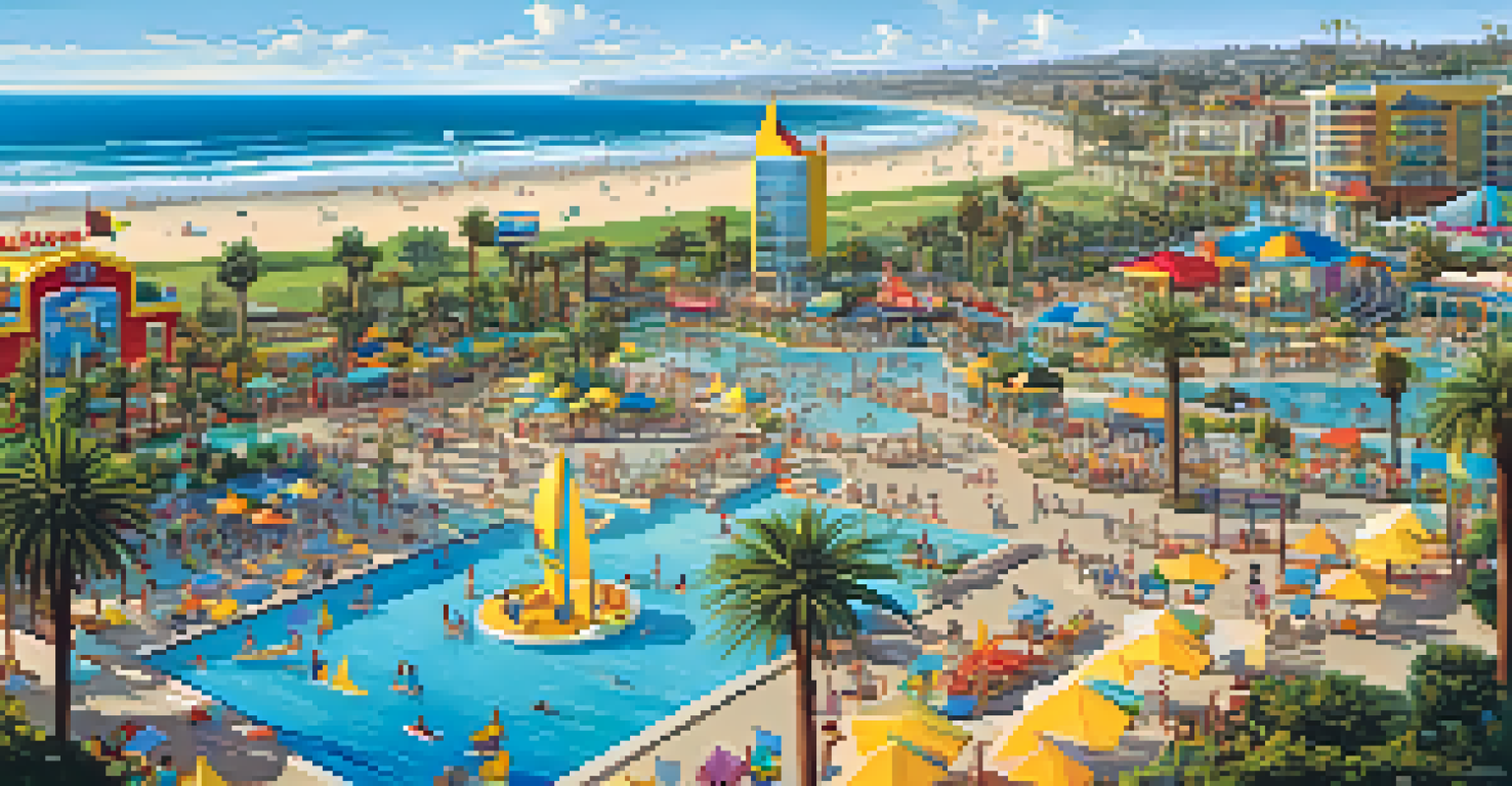Exploring the Founding of Carlsbad: A Historical Overview

The Early Beginnings of Carlsbad: A Brief Introduction
Carlsbad, located in California, has roots that stretch back to the early 1880s. Originally part of a vast expanse of land owned by ranchers, this area was primarily agricultural, with fields of crops and grazing livestock. The early settlers were drawn to the fertile soil and mild climate, which created a perfect environment for farming and community growth.
History is not a burden on the memory but an illumination of the soul.
As the region began to attract more settlers, the need for organized town planning became evident. The establishment of a post office in 1887 marked a significant step in creating a centralized community. This small yet crucial development helped foster a sense of belonging among residents and laid the groundwork for a burgeoning town.
Thus, the stage was set for Carlsbad to evolve from a quiet agricultural area into a vibrant community, paving the way for its later development and significance in California's history.
The Influence of the Railroad on Carlsbad's Growth
The arrival of the railroad in the late 1800s was a game changer for Carlsbad. It not only made transportation easier but also opened up new economic opportunities for local businesses. With the railroad connecting the town to larger cities, goods could be shipped out and supplies brought in, fostering trade and commerce.

This increase in accessibility attracted more settlers and tourists, turning Carlsbad into a desirable destination. As people began to visit, they were enchanted by the area’s natural beauty, leading to the establishment of hotels and resorts that catered to the growing influx of visitors. This not only bolstered the local economy but also enhanced Carlsbad's reputation as a charming getaway.
Carlsbad's Agricultural Roots
Agriculture has been a cornerstone of Carlsbad's economy, with crops like strawberries and avocados significantly contributing to the community's growth and identity.
Ultimately, the railroad played a pivotal role in shaping Carlsbad’s identity, transforming it from a quiet agricultural settlement into a bustling community that thrived on trade, tourism, and hospitality.
The Role of Agriculture in Carlsbad's Development
Agriculture has always been a cornerstone of Carlsbad’s economy and identity. With its rich soil and favorable climate, the area became known for producing a variety of crops, including strawberries, avocados, and tomatoes. These crops not only supported local families but also contributed significantly to California's agricultural output.
The past is a place of reference, not a place of residence.
As farming methods evolved, so did the community's economy. Farmers began to adopt innovative techniques and technologies that increased productivity, allowing Carlsbad to thrive. This prosperity led to the establishment of local markets and festivals, which celebrated the harvest and brought residents together in a shared sense of pride.
Today, while Carlsbad has diversified its economy, the legacy of its agricultural roots continues to be celebrated, reminding residents and visitors alike of the town's humble beginnings.
The Founding of Carlsbad: Key Figures and Events
The founding of Carlsbad can be attributed to a handful of key figures, including John Frazier and his wife, who played vital roles in the town's establishment. Their vision for a community centered around health and wellness led to the development of the area's famous mineral springs, attracting visitors seeking therapeutic benefits.
In 1882, the Frazier family opened the Carlsbad Mineral Water Company, which marked a significant milestone in the town's history. This venture not only promoted Carlsbad as a health resort but also laid the foundation for future growth and development. The refreshing mineral water became a key attraction for visitors, contributing to the town's early tourism industry.
Railroad Transformed Carlsbad
The arrival of the railroad in the late 1800s opened up new economic opportunities, attracting settlers and tourists to Carlsbad and boosting its local economy.
Over the years, these pioneering efforts and entrepreneurial spirits paved the way for Carlsbad to flourish, transforming it into the vibrant community known today.
Carlsbad's Cultural Heritage: A Melting Pot of Influences
As Carlsbad grew, it became a melting pot of cultures and influences, shaping its unique identity. The influx of diverse populations, including Spanish, Mexican, and later, European immigrants, enriched the town's cultural landscape. This blend of traditions and customs contributed to a vibrant community fabric, evident in local festivals, cuisine, and art.
Cultural events, such as the annual Carlsbad Village Fair, celebrate this diversity, showcasing local artisans, musicians, and food vendors. These gatherings not only bring residents together but also attract tourists, further embedding the rich cultural heritage within the community's identity.
The ongoing appreciation for cultural diversity continues to play a vital role in Carlsbad's development, ensuring that the town remains a welcoming place for all.
The Evolution of Carlsbad: From Town to City
Carlsbad officially became a city in 1952, marking a significant transition from a small town to an established city. This change was driven by the rapid population growth and the need for more structured governance to address the challenges of urban development. As more families moved to the area, infrastructure improvements became essential.
The growth spurt led to the construction of schools, parks, and public facilities, enhancing the quality of life for residents. This evolution also attracted new businesses, contributing to a more diverse economy, ranging from tourism to technology. The city's commitment to planning and development played a crucial role in maintaining a balance between growth and preserving the town's unique character.
Cultural Diversity Shapes Community
Carlsbad's rich cultural heritage, influenced by various immigrant populations, is celebrated through local events and continues to enhance the town's unique identity.
Today, Carlsbad stands as a testament to the power of thoughtful development, blending its historical roots with modern amenities and attractions.
Carlsbad Today: A Blend of History and Modernity
Fast forward to today, and Carlsbad is a thriving city that beautifully marries its historical roots with modern living. Known for its stunning beaches, vibrant arts scene, and bustling business community, the city offers residents and visitors a taste of both history and contemporary life. Historic sites, such as the Carlsbad Village, serve as a reminder of the town's rich past while coexisting with modern developments.
Tourist attractions, like the famous LEGOLAND California Resort, showcase the city's evolution into a family-friendly destination, drawing visitors from all over. Meanwhile, the commitment to preserving green spaces and local heritage ensures that the community remains connected to its past.

Carlsbad's ability to adapt and grow while honoring its history is a remarkable journey that continues to unfold, making it a special place to live and visit.